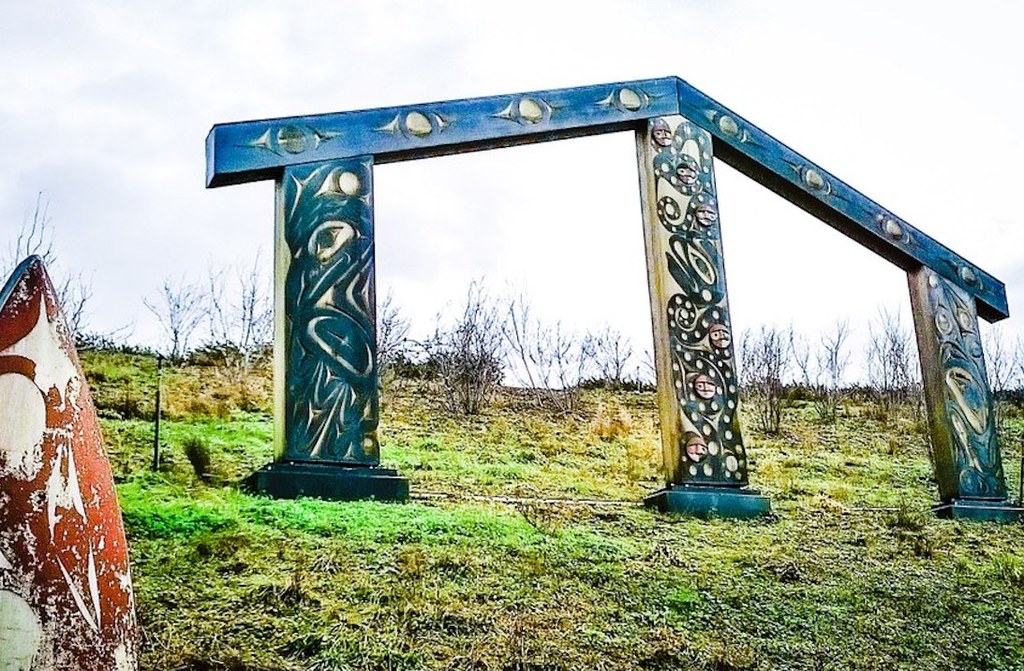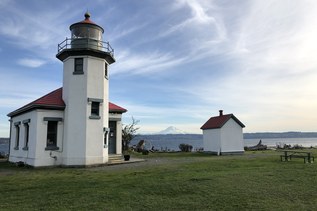The Brightwater Treatment Plant, which treats waste and storm waters for King County, opened in 2011. To ensure that the treatment plant would be an asset to its host community, the campus was designed to include an Environmental Education and Community Center and a 70-acre public open space with walking trails and natural wetland habitat. The Brightwater Center’s three miles of trails yield a fascinating, family-friendly hiking experience through wetlands and woodlands that serve as a protected enclave for native wildlife and plant species.
The public open space is divided roughly into thirds. From north to south, there is a North Habitat, a Wetscape, and a South Habitat. One can traverse all three areas in the course of an hour or two. The interpretive trails feature kiosks that explain the history, flora, fauna, and operations of the Brightwater campus.
Find the main trail that heads west from the parking area, walk 200 feet, and make a right turn to reach the North Habitat’s wetland and woodland areas. After 0.1 mile, detour down to Otter Pond, a salmon rehabilitation area. Continue over a bridge that gives you a perspective of the wetlands, then pass by Duck Pond, where mergansers and mallards congregate. Cross a shorter, curved bridge over Sapsucker Creek into the North Habitat’s woodland area; the flora changes to Douglas-fir, cedar, alder, bigleaf maple, sword fern, kinnikinnick, devil’s club, and Cascade-Oregon grape.
The trails of the North Habitat lead you past a picnic shelter (called the Field House), a privy, and several round hills, the tallest of which has a bench overlook where you can take in the entire North Habitat.
Return southward to reach the Wetscape/Stormwater Landscape, which is marked by sculptures, ponds, and marshland trails. It is 0.35 miles from Otter Pond in the North Habitat to Delta Pond in the Wetscape. Continue another 0.35 miles south to the banks of Howell Creek in the South Habitat, which has similar flora as the North Habitat. Consider a brief but steep climb up the hill that dominates the South Habitat for a commanding view of the entire open space and treatment plant. On the return trip, take the upper trail to pass by reflecting ponds, where waterfowl congregate, and view art installations that dot the grounds.
WTA Pro Tip: Consider pairing your hike with a visit to the Brightwater Environmental Education and Community Center, which is open Monday through Thursday from 10 a.m. to 4 p.m.






 Trailhead
Trailhead





